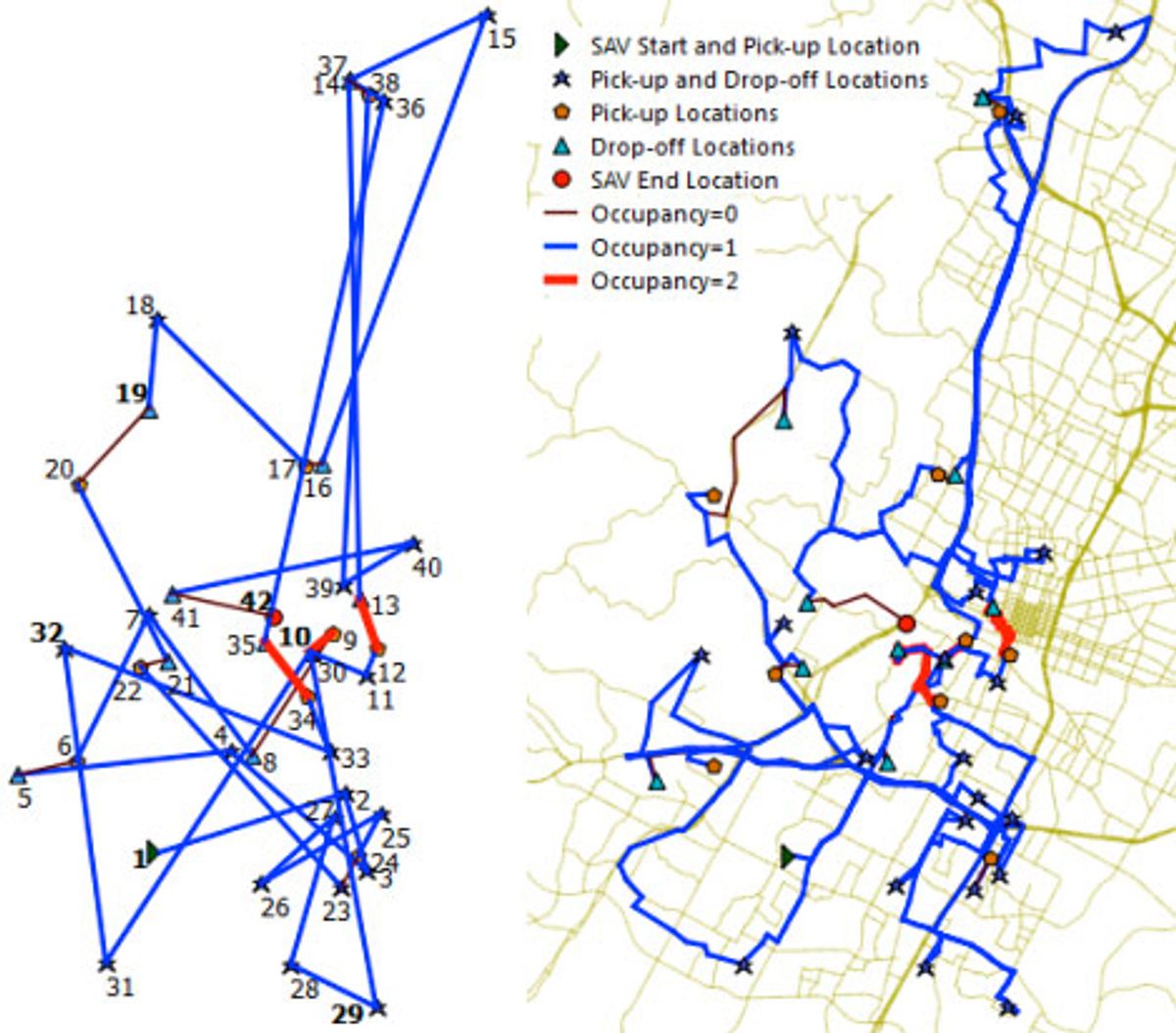When driverless taxis are at our beck and call, a lot of people will give up the chore of driving and parking, streets will be less crowded, and commuting times will drop, say proponents of automated automobiles.
It makes sense, but does it compute? Many computer models have attempted to answer that question; now a particularly detailed one for Austin, Texas, suggests that robocabs could indeed save commuters a lot of hassle and money.
“A private fleet operator paying $70,000 per new [driverless taxi] could earn a 19 percent annual return on investment while offering services at $1.00 per mile of a non-shared trip (which is less than a third of Austin’s average taxi cab fares),” according to a paper that’s to be presented in January at a meeting of the Transportation Research Board, in Washington, D.C.
That's not far off similar calculations made a few years back by Larry Burns, director of the Program on Sustainable Mobility at Columbia University. Burns estimated that with automated vehicles offering shared rides, Manhattan would need just 15 percent as many cars as now. Even human-driven cars that share rides could save a lot of road space.
The authors of the latest study worked together at the University of Texas at Austin, where Kara M. Kockelman is a professor of civil engineering and Dan J. Fagnant recently got his Ph.D. in the same subject. He's since moved to the University of Utah, where he is an assistant professor.
Their model uses software agents in a network; the agents represent robotic taxis, and the network stands in for the traffic system of Austin. The problem in any such model lies in just how much wiggle room you build in: too much and you swamp the computer; too little and you get a misleading answer.
For instance, one model the authors cite took into account a wide variety of possible trips, and it worked very well for tiny networks. But its calculations got out of hand as it scaled up the number of travelers and the number of pickup and drop-off points. Another model simplified things by treating taxis as minibuses that move among a few stations and wait for customers for a good long while—but that throws out most of the scheme’s flexibility.
Fagnant and Kockleman made their simulated robots wait at the curb for just five minutes, and they set all the trips to begin and end at points that lie inside one of the 2,258 zones into which Austin’s traffic is divided. They used real-life commuting data to simulate the four rush periods of the day, and they calibrated the size of their robotic fleet in a preliminary simulation that asked how many cabs had to be available on the first day to ensure that no traveler had to wait long for a ride. The answer: 1,715 robotaxis, providing 56,324 person-trips a day.
To get efficiency and fairness alike, the researchers juggled a number of variables, not least the convenience of staying in a taxi nonstop versus the efficiency of sometimes being handed off to another one. They gave priority to those already in a taxi, and they also made sure that no traveler who’s almost at his destination must suffer through a late-minute detour to pick up someone else.
Finally, the researchers focused on a small sample of riders meant to represent the one or two percent of all travelers who would be early adopters. For this sample, they found that every robotaxi replaced about 11 cars; the average wait for a taxi was a bit over a minute, with 99 percent waiting 10 minutes or less. Because the early-adopter sample was small, relatively few people shared rides. But with broader use, that percentage would rise, allowing still greater efficiencies.
As the authors point out, these numbers have to be refined a bit to take into account the extra capacity any citywide transportation system needs to cover days when demand is unusually high. Other quibbles include the various ways robotic taxis try to maximize their value when they’re cruising along without a passenger, or when they’re looking for a parking spot.
Mere details, compared to the one problem they do not address: making a driverless taxi.
Philip E. Ross is a senior editor at IEEE Spectrum. His interests include transportation, energy storage, AI, and the economic aspects of technology. He has a master's degree in international affairs from Columbia University and another, in journalism, from the University of Michigan.



